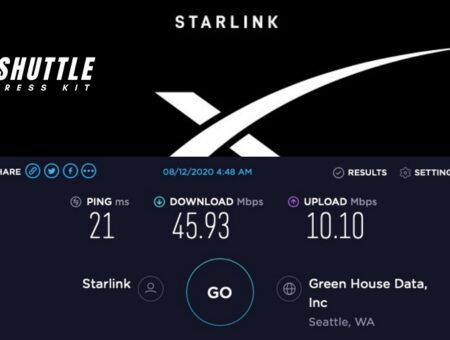Astoundingly fast, unsurprisingly innovative, and breaking boundaries in connectivity – that’s Starlink’s Internet for you. In this insightful article, we embark on an engaging journey to answer your burning question: “How Fast Is Starlink Internet?” So, let’s gear up to dive into the thrilling world of Elon Musk’s revolutionary satellite-internet venture and its impressive speeds.
Starlink’s internet speed is much quicker than many might expect from a satellite service. Offering download speeds ranging from 50 megabits per second (Mbps) to over 150 Mbps in some cases, with upload speeds typically exceeding 20Mbps, users get a nearly flawless internet experience even in remote locations.
Latency times are as low as around 20 milliseconds – quite a multi-fold improvement over the typical satellite-based connections.
What is Starlink?
It’s likely you’ve heard the term “Starlink” banded about in recent tech news, but what exactly is it? Simply speaking, Starlink is a revolutionary endeavor that aims to carpet the sky with thousands of low-orbit satellites to provide high-speed internet all across the globe.

But before we jump directly into how fast Starlink’s Internet service can potentially be, it’s equally important to comprehend what it offers and why it’s unique amongst its competitors.
What does it offer?
Starlink is a subsidiary venture run by the innovative company SpaceX, masterminded by none other than Elon Musk. Their primary offering revolves around facilitating internet access in places where it has been notoriously tough to achieve reliable connectivity.
This ambitious project isn’t limited only to hard-to-reach terrestrial areas; their long-term vision extends as far as providing internet service for Mars colonists! Here are some finer points of its service:
- Low-latency, high-speed satellite internet all across the globe
- Healthier competition within ISP marketplace
- Quick installation process using a self-aligning dish
- A flexible connection not reliant on ground infrastructure
The continuous nature of their satellite deployment means they are always looking at ways to improve services and make faster and more reliable Internet accessible even in traditionally underserved locations.
Why is Starlink unique?
What sets Musk apart from most entrepreneurs is his visionary faith in potentially world-altering technologies – one example being Starlink. The entire concept behind this project differs from conventional ISP providers; instead of relying on earthbound wiring schemes or static above-ground satellites, Starlink designs include an evolving constellation of compact satellites orbiting Earth at low altitudes.
This innovative approach promises significant advantages such as lower latency (the delay data experience when moving) and wider coverage. Yet perhaps one essential distinguishing trait of SpaceX’s venture is its dedication to inclusive growth.
Their focus isn’t limited to providing services only in high-demand, lucrative markets. They aim to improve worldwide internet availability even within rural and remote communities.
This commitment towards universal internet accessibility underscores Starlink’s exceptional uniqueness – blending groundbreaking technology with an ethos of global empowerment.
How Fast Is Starlink Internet?
Astoundingly, Starlink is redefining internet expectations across the globe. As an emerging competitor within the satellite internet service sphere, knowing exactly how fast Starlink’s internet speed is holds great interest to many.
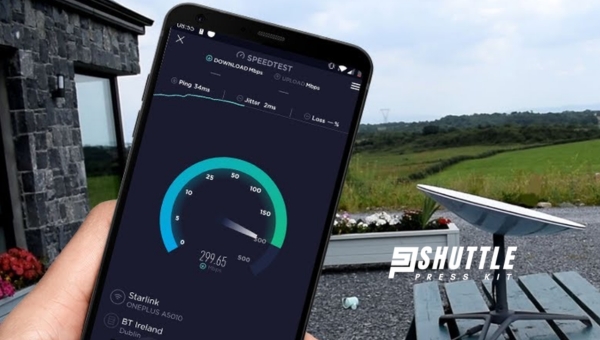
Current Speed Expectations
Surprisingly, the speed expectations for Starlink have been consistently exceeding beginner benchmarks. Reviewing the results garnered from numerous user-applied speed tests permits us to examine this more closely:
- Download Speed: Typically, users are experiencing download speeds in a wide range of 40 Mbps to an unexpected high of 150 Mbps.
- Upload Speed: For uploading content, speeds usually cluster between a decent 10 Mbps and peak at around a sturdy 40 Mbps.
- Latency Rate: In terms of latency or lag time when sending data packets through space and back – one of the critical barriers for satellite broadband – subscribers are seeing rates falling between about 20 ms and 40 ms, marginally higher than what you might expect from fiberoptic service but still remarkably low for satellite.
It’s remarkable that these figures are solely initial ones considering Starlink is only in beta testing currently. This can only point towards greater strides ahead.
Comparisons to Other Satellite Providers
Having established how competent its speed fares so far, it’s vital to compare Starlink with traditional Satellite ISPs. Here are some key distinctions:
- Speed consistency: Unlike traditional providers who often see substantial fluctuations in connection speeds due primarily to weather and obstructions, Starlink offers much more consistent browsing experience.
- Broadband Feel: Users have reported that Starlink’s data transfer feels much like SSH (Secure Shell) or VPN (Virtual Private Network) connections, not something you would associate with conventional satellite-based connections.
- Viasat, another popular Satellite ISP, reports average download speeds typically ranging between 12 and 100 Mbps per FCC (Federal Communications Commission) data. This indicates that at its optimum, Starlink as a newcomer could surpass this range during its beta phase.
There is undeniably more than meets the eye when gauging “How fast is Starlink’s Internet?” The speed performance is encouragingly competitive at this early stage, setting confident expectations for the future ahead. It indeed holds an immense potential for revolutionizing the world of internet connectivity on multiple fronts.
Also Read: Starlink vs HughesNet: Which Wins the Satellite Battle?
Potential for Future Speed Increases
When discussing “How Fast Is Starlink’s Internet?”, it’s essential to consider not just its current speed, but also the vast potential for future speed increases. Starlink is a robust project that’s continually expanding, thereby significantly influencing the connection quality and speed of its internet service.
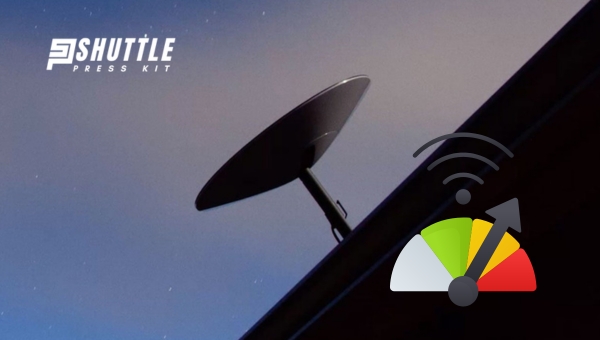
This constant development comes in two main forms: infrastructure upgrades – mostly through the launching of new satellites – and software improvements.
Infrastructure Upgrades
One of the key strategies adopted by Starlink in order to improve its internet speed involves continuous infrastructure upgrades, predominantly through launching new satellites into space. When you have more satellites in orbit, it markedly optimizes the network’s efficiency and coverage.
The primary reason behind this is quite straightforward: more satellites mean an increase in overall connectivity and reduced latency periods. Each fresh batch of launched satellites provides better path options for transmitting data back and forth, which ultimately accelerates internet speed.
With each satellite that SpaceX launches, customers are essentially gaining extra points from which they can obtain internet access with improved quality. \
Given that Elon Musk’s company has plans to launch perhaps thousands more in upcoming years, users should reasonably expect ongoing improvements to their broadband speeds over time as these infrastructure upgrades continue rolling out.
Software Improvements
In addition to physical additions above the Earth’s atmosphere, another promising factor indicating an upward trend in Starlink’s Internet speeds lies on a much smaller scale inside your devices – software improvements. The system of interconnected smallsats used by Starlink relies heavily on software controls for optimal functionality.
Software updates play a crucial role in enhancing satellite efficiency since they fine-tune operational parameters like allocation direction, coding algorithms, among others resulting in amplified performance.
These regular updates enable developers not only to remedy system bugs but also enhance network capacity or adjust bandwidth distribution depending on user demands or natural fluctuations— maximizing these factors can definitely improve one’s browsing speeds considerably.
With technological advancements rapidly unfolding, algorithms are only going to get better and more precise, making software improvements a promising venue for further accelerating Starlink’s Internet. Therefore, as long as there are ongoing enhancements and upgrades in both infrastructure and software, Starlink will continue improving the speed of its internet service.
The Role of Geography on the Speed of Starlink’s Internet
Determining the speed of your internet often boils down to one major factor – geography. Essentially, where you live can greatly influence how fast or slow your connection is.
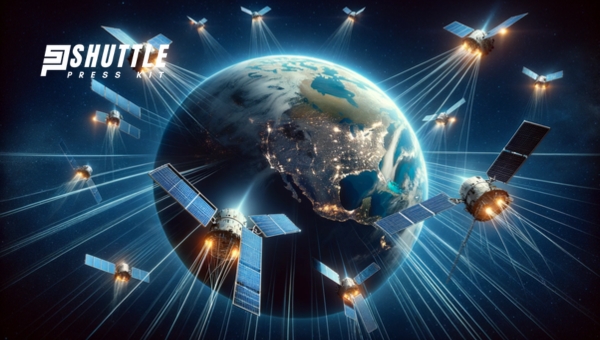
Given this, we’ll discuss whether the internet speed from Starlink varies in different locales.
Rural vs Urban Areas
Starlink aims to ensure everyone has access to high-quality internet speeds wherever they may be located, and their satellite-based approach makes this entirely possible. This goal is especially beneficial for folks residing in rural areas who typically don’t have as many options for internet service providers.
One might argue that rural locations traditionally suffer from slower connections primarily because deploying miles and miles of cable or fiber optics simply isn’t feasible or cost-effective for most companies. Imagine being a farmer out in Montana; it’s quite unlikely that you’d find buzzing ISPs excited to bring you lightning-fast speeds!
The pleasure of Starlink’s connectivity is dramatically changing the game here. Many rural residents have reported impressive upticks in their download and upload speeds using Starlink compared to traditional satellite-based or DSL providers formerly available to them.
On the other hand, if we twist our geographical lens towards more populated urban areas, these locales generally enjoy a higher degree of competition among terrestrial broadband ISPs. It means folks living in big cities like New York or Los Angeles usually enjoy more options resulting in potentially faster connections.
Comparatively, urbanites already experiencing high-speed Internet may not see a dramatic increase with Starlink; however, they might appreciate its reliability over other high-traffic terrestrial services often prone to outages and slowdowns during peak usage times.
Also Read: Unraveling Starlink Portability: A Gateway to Internet Anywhere
Challenges Facing The Speed Of Starlink’s Internet
Starlink’s internet, despite all advancements, faces certain hurdles that can affect the speed and overall performance of its service. These barriers range from technological pitfalls to systematic complications inherent to satellite internet.
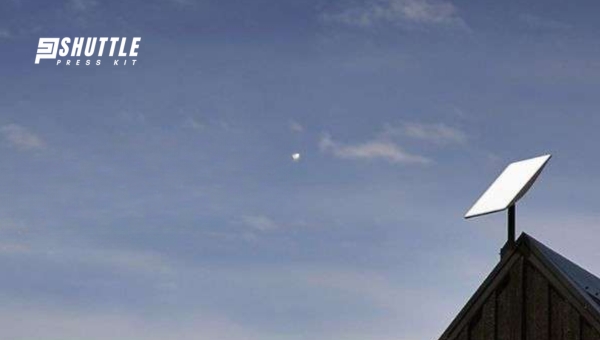
Among the most noteworthy are hardware setup issues which might have a direct or indirect impact on the smooth operation and speed of Starlink’s internet.
Hardware Setup Issues
Hardware setup is a crucial variable in the equation of fast and efficient service of any internet connection, let alone Starlink. Unlike traditional broadband, setting up Starlink necessitates specific equipment like a user terminal (referred to as “Dishy McFlatface”) and mounting kits which can create problems if not handled properly.
Primarily, improper alignment or positioning can render Dishy unable to establish an optimal line-of-sight with the satellites.
This might result in slow speeds or intermittent connectivity as data streams cannot travel without obstruction. Furthermore, weather implications such as snow covering Dishy could disrupt signal reception leading to sluggish surfing.
Secondary hardware challenges fall more into logistical territories, for instance, delays in delivery of kits or missing pieces upon arrival halt the installation process inevitably delaying usage start times limited by setup complications.
User-end handling also matters significantly here; users unfamiliar with technology could face troubles mounting and connecting electrical components consequently making the experience troublesome hence affecting connectivity or slowing down initially perceived speed rates.
FAQs
How fast is Starlink’s Internet currently?
Current user experience shows speeds varying between 50 Mbps to 150 Mbps for downloads, and 20 Mbps to 40 Mbps for uploads.
Is there a potential for future increases in the speed of Starlink’s Internet?
Yes, with ongoing infrastructure upgrades and software improvements, there’s immense potential for Starlink’s internet speed to increase.
What role does geography play in Starlink’s Internet Speeds?
Geographic location plays a significant role wherein urban areas with terrestrial broadband might experience slower speeds than rural areas with limited options.
What kind of challenges could affect how fast Starlink’s Internet is?
Challenges can arise during hardware setup which can impact the quality of connection and hence affect internet speed.
What are the general feedback from current users on “How Fast Is Starlink’s Internet?”
User reviews have been generally favorable although speeds may vary greatly depending on location and weather conditions.
Also Read: How to Contact Starlink Customer Support? – Quick Guide
Conclusion
The query, “How Fast Is Starlink’s Internet?” has a dynamic answer. As a ground-breaking offering from Elon Musk’s avid SpaceX, Starlink satellite internet speeds currently impress with download and upload statistics that can compete with traditional providers.
However, its true potential is yet unproven and dependent on several key factors. The launch and integration of more advanced satellites promise better connection speeds in the future along with developments in software technology that enhance satellite performance.
